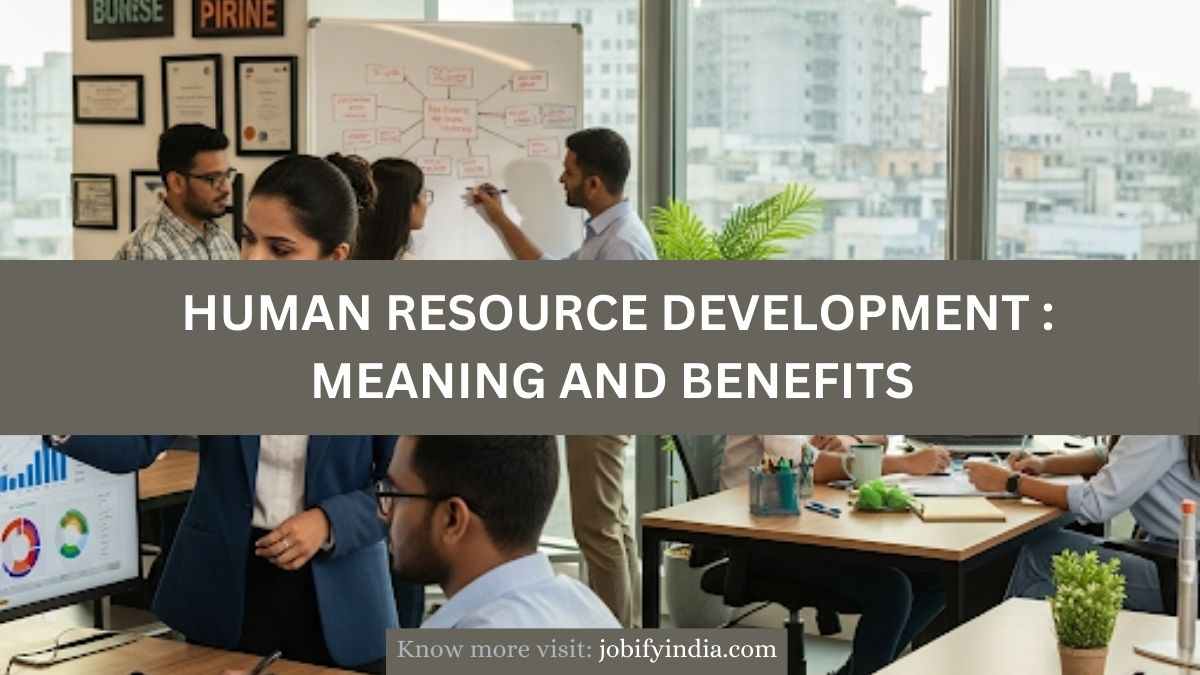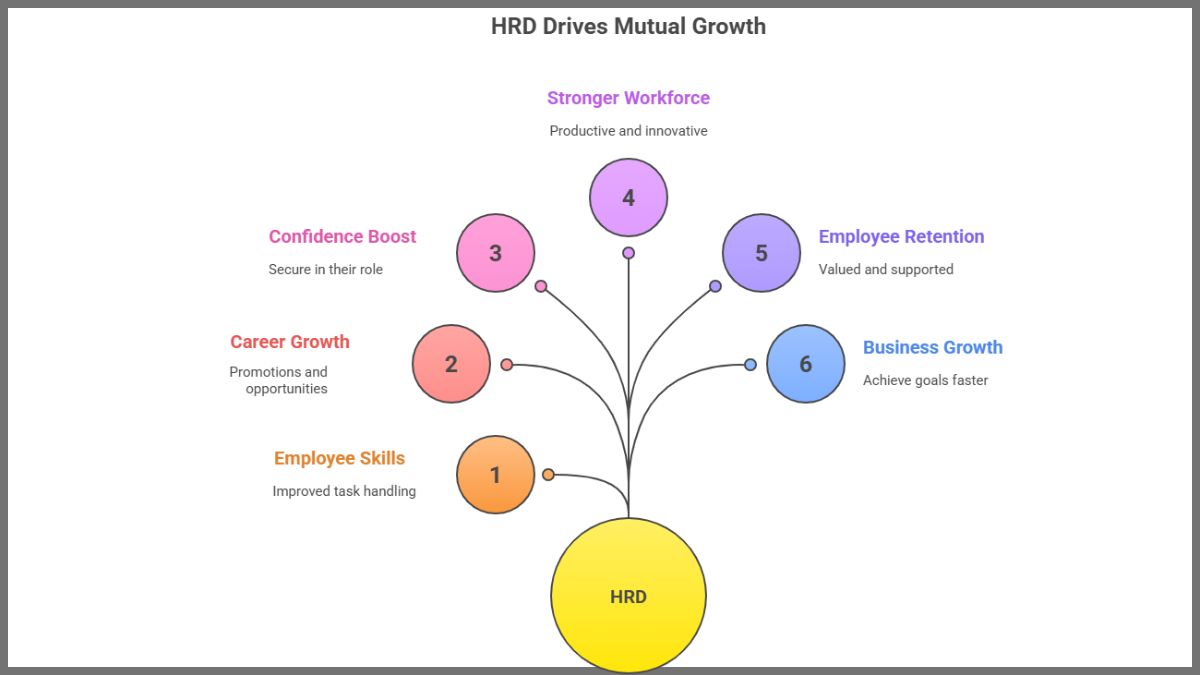Have you ever wondered how companies help employees grow and become better at what they do? Well, that’s where Human Resource Development, or HRD, comes into play. In simple terms, it’s all about helping people learn, grow, and become more effective in their jobs—and in life. Whether you’re an employee looking to climb the career ladder or a business owner wanting a strong team, understanding HRD can be a game-changer.
What Is Human Resource Development?
Human Resource Development (HRD) refers to the process of improving an employee’s skills, knowledge, and experience so they can perform better at work. Think of it as personal and professional growth supported by your employer. Still wondering what that really means?
Imagine you start a new job. You’re excited but unsure about some tools or software your company uses. To help you get up to speed, your employer might set up training sessions, assign a mentor, or enroll you in a workshop. All of these are part of HRD. The goal is simple: to make you more capable, confident, and efficient in your role.
Why Does HRD Matter?
Whether you’re part of a small startup or a multinational organization, HRD offers long-term benefits for both employees and employers.
For Employees:
- Better Skills: With the right training, you can learn faster ways to handle your tasks.
- Career Growth: More knowledge and experience can lead to promotions and job opportunities.
- Increased Confidence: When you know what you’re doing, you feel more secure in your role.
For Employers:
- Stronger Workforce: Well-trained employees are more productive and innovative.
- Employee Retention: People stay longer when they feel valued and supported.
- Business Growth: A skilled team helps a business achieve goals faster.
In other words, HRD is a win-win for everyone involved.
Key Areas of Human Resource Development
HRD isn’t just about sending people to seminars. It covers several different areas, all focused on learning and improvement.
1. Training and Development
This is the most well-known part of HRD. It includes everything from on-the-job training to e-learning programs. For example, if a company introduces a new software, employees might attend a workshop on how to use it effectively.
2. Career Development
This focuses on helping employees plan and work toward their career goals. It might involve mentorship programs, leadership courses, or career counseling. Ever been asked about where you see yourself in five years during a performance review? That’s career development in action. If you’re curious about the different career opportunities in HR itself, check out some of the top careers in Human Resources.
3. Organizational Development
Organizational development aims to improve the company as a whole—its structure, culture, and systems. This might involve team-building activities, changes in policy, or even company-wide coaching sessions. It’s like giving the entire company a makeover from the inside out.
4. Performance Management
This is all about tracking employee performance and providing feedback. Regular check-ins, appraisals, and goal-setting sessions fall under this area. If you’ve ever had a performance review with your manager, that’s part of this process.
5. Talent Management
Talent management involves identifying high-potential employees and giving them the tools and opportunities to grow. Think of it as spotting rising stars and nurturing them into future leaders.
Popular HRD Tools and Methods
Businesses can apply different tools and strategies depending on their goals and budgets. Here are some common ones:
- Workshops and Webinars: Short, focused learning sessions on relevant topics.
- Online Courses: Platforms like Coursera, LinkedIn Learning, or internal portals.
- Mentorship Programs: Pairing new hires with experienced staff for guidance.
- Job Rotation: Allowing employees to try different roles to gain broader experience.
- Feedback Systems: Tools for giving and receiving constructive feedback.
The best HRD programs mix and match these tools based on what works best for the team. Since technology plays such a big role today, many companies also rely on dedicated HR software in India to streamline training, performance tracking, and employee engagement.
How Businesses Can Build Effective HRD Programs
If you’re a business leader wondering how to start or improve HRD efforts, here are a few tips:
- Identify Needs: What skills are lacking? What goals do your teams want to achieve?
- Set Clear Goals: Make sure training fits into a bigger vision.
- Provide Resources: Whether it’s budget, time off, or tools, support employees in learning.
- Track Progress: Regularly check whether the programs are actually helping.
- Encourage Feedback: Let employees share what works and what doesn’t.
Remember, HRD isn’t a one-size-fits-all solution. What works for a tech startup might not suit a retail chain. Flexibility is key.
Final Thoughts
Human Resource Development may sound like corporate speak, but at its heart, it’s simply about helping people grow. And when people grow, companies do too. Whether you’re just starting your career or leading a team, understanding the value of HRD can help you make smarter, more meaningful decisions.
So, the next time you join a training session or receive feedback from your manager, think of it as more than just a work task. It’s a small step in your personal growth journey—and that’s something worth investing in.
Looking to develop your own skills or support your team better? Start by exploring how Human Resource Development can work for you.






